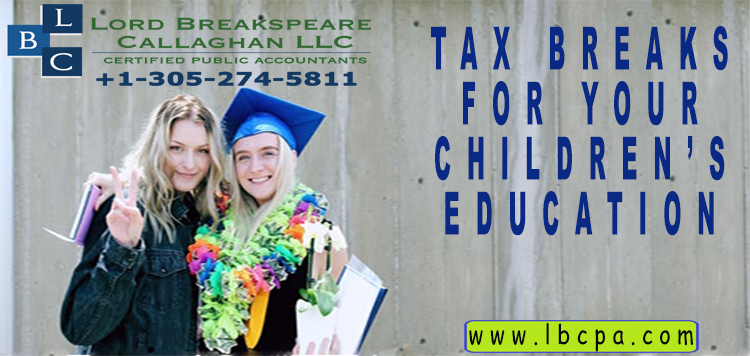LBCPA News 
Click here to go back
SAVING ON TAXES FOR EDUCATION

There are many different ways to use tax breaks for the higher education of your children. Be aware that you can only receive one type of relief for one item. It is best to consult with a professional to determine which would be the most advantageous.
What is the education tax credit?
You must make a choice between two types of tax education credit.
- The American Opportunity Tax Credit will work for the first 4 years of college for at least full-time study.
- The Lifetime Learning Credit applies for as long as the student studies, but the percentage of savings per year decreases drastically.
What is a Coverdell (Section 530)?
An education IRA is different than a standard IRA in these ways:
- Withdrawals aren't taxed if used for qualified education expenses.
- Contributions can be made only up until the point that the client reaches 18, and all funds must be distributed by the time that they are 30.
- Contributions are not tax deductible
How can I best use the Coverdell (section 530)?
It is possible to have various 530 accounts for the same student, each opened by different family members or friends. There is no limit to the number of people that can open an account like this for a child.
The account can be transferred to another family member at any time. If the original child decides against going to college or is granted a scholarship, another family member can still utilize the money that has been saved.
What is a qualified tuition program?
The Section 529 is a college savings program available in most states. Money is invested to cover the costs of future education. These investments grow tax free and the distributions may also be tax-free.
What differentiates the Coverdell Section 530 and the Section 529?
- The Section 529 allows for much larger yearly investments, whereas the Section 530 currently only allows for $2000 annually.
- The choice of investments in the Section 529 is extremely conservative and limited while the Section 530 allows for many different options.
- The Section 530 is a nationwide program while the 529 varies from state to state.
- The Section 530 will let you use its funds for primary and secondary education, while the Section 529 can only be used to pay up to a total of $10,000 of tuition per beneficiary (regardless of the number of contributing plans) each year at an elementary or secondary (k-12) public, private or religious school of the beneficiaries choosing.
If you have any questions regarding accounting, domestic taxation, essential business accounting, international taxation, IRS representation, U.S. tax implications of Real Estate transactions or financial statements, please give us a call at 305-274-5811.
Source: IRS






